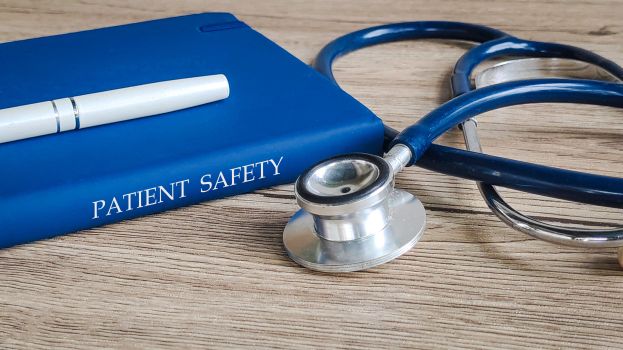Dual Claims in Medical Malpractice: Holding Medics and Clinics Liable
Medical malpractice attorneys in the United Kingdom can file claims not just against individual doctors, but also against the firms or clinics for which they operate. Learn more about the consequences of dual claims.
May 17, 2023

Introduction
Medical malpractice is a complex legal issue that arises when healthcare professionals, including medics, doctors, and nurses, fail to provide a reasonable standard of care to their patients, resulting in harm or injury. In the United Kingdom, medical malpractice lawyers have the option to raise claims not only against individual medics but also against the companies or clinics they work for (even if they are contractors). This practice, known as a dual claim, allows for a broader approach to seeking compensation for victims and holding medical entities accountable for the actions of their employees (or contractors). This article aims to explore why medical malpractice lawyers pursue dual claims, provide case studies illustrating such scenarios, and discuss steps medical entities can take to protect themselves, as well as the importance of having a robust Medical Malpractice policy for medical entities.
Why Dual Claims?
- Deeper Pockets: One of the main reasons medical malpractice lawyers raise dual claims is the pursuit of greater financial compensation for their clients. Individual medics may not have adequate coverage through their medical indemnity polices or substantial personal assets, clinics or companies often have greater resources and insurance coverage that can provide adequate compensation to the victims of medical negligence.
- Vicarious Liability: In the UK, the legal principle of vicarious liability holds employers responsible for the actions of their employees (including the contractors they recruit) within the course of their employment. By pursuing a dual claim, medical malpractice lawyers can establish the liability of the clinic or company for the negligent acts of their employees, thereby maximizing the chances of a successful claim.
Examples of Dual Claims.
- Case Study 1: In 2018, a patient underwent a surgical procedure at a private clinic. During the operation, the medic made a serious error that caused significant complications and further medical intervention. The patient's lawyer filed a dual claim against the medic for their individual negligence and the clinic for inadequate supervision and training. The court found both the medic and the clinic liable, resulting in a higher compensation award for the patient.
- Case Study 2: A misdiagnosis by a doctor at a hospital resulted in delayed treatment for a patient, leading to the worsening of their condition. The patient's lawyer pursued a dual claim against both the doctor and the hospital, alleging negligence in the doctor's diagnosis and the hospital's failure to establish proper protocols for accurate diagnoses. The court held both the doctor and the hospital liable, emphasizing the hospital's responsibility to maintain adequate systems for patient care.
Clinic/Company Liability in Medical Malpractice
- Negligent Hiring and Supervision: Medical entities can be held liable for the negligent actions of their employees (or contractors) if it can be proven that they failed to exercise due diligence in hiring and supervising those employees. This includes verifying qualifications, conducting background checks, and ensuring appropriate training and supervision.
- Inadequate Policies and Procedures: If a medical entity lacks proper protocols, policies, or procedures to ensure patient safety and quality of care, they may be held accountable for any harm caused by their employees' negligence. Establishing and following industry-standard guidelines can help mitigate the risk of liability.
- Equipment and Facility Maintenance: If a medical entity fails to maintain equipment, facilities, or infrastructure, resulting in harm to patients, they may be held liable for negligence. Regular inspections, maintenance schedules, and prompt repairs are crucial in reducing the likelihood of equipment-related incidents.
- Failure of employee’s personal indemnity to respond: In the event that an employee’s (or contractors) medical indemnity policy fails to respond and pay for (or towards) a claim, the medical entity may be brought into the claim as the next associated party in the chain.
Protecting Medical Entities
- Risk Management Programs: Medical entities should develop and implement comprehensive risk management programs that include ongoing training, clear policies and procedures, and continuous monitoring of employee performance. These measures can help identify and rectify potential issues before they result in harm to patients.
- Adequate Insurance Coverage: Maintaining appropriate professional liability insurance coverage is vital for medical entities. This ensures financial protection in the event of a dual claim or any other medical malpractice lawsuit.
- Documenting Consent and Communication: Medical entities should emphasize clear and comprehensive documentation of patient consent and communication (where applicable). Properly documenting discussions, informed consent, and any instructions given to patients can serve as valuable evidence in the event of a malpractice claim. This includes documenting any potential risks, alternative treatment options, and ensuring that patients have a thorough understanding of their medical procedures.
The Importance of holding Vicarious Medical Malpractice Liability Insurance.
- Holding vicarious medical malpractice liability insurance is of utmost importance for medical entities. This type of insurance provides vital financial protection in cases where the medical entity is held liable for the actions of their employees.
- Vicarious liability holds employers responsible for the negligence of their employees, and without proper insurance coverage, medical entities can face substantial financial burdens that may threaten their stability and reputation. Medical malpractice claims can result in significant compensation awards, legal fees, and other related expenses.
- Vicarious medical malpractice liability insurance ensures that medical entities have the necessary resources to defend against claims and provide compensation to victims, minimizing the potential impact on their financial well-being. It offers peace of mind and safeguards the long-term sustainability of medical entities, allowing them to focus on delivering quality care while mitigating the risks associated with medical malpractice litigation.
- There is a common misconception among medical entities that they are shielded from claims if their medical professionals, whether employees or contractors, have their own medical malpractice insurance. However, this is not the case. In situations involving a dual claim, even if the individual employee or contractor is found negligent and is required to pay the settlement of a claim, the medical entity can still be implicated in legal proceedings and become responsible for covering the costs of defense. In other words, simply relying on the insurance coverage of individual medical professionals does not fully protect the medical entity from potential liabilities and financial burdens associated with defending against claims.
Get in touch with Medicas to learn more about Dual claims and how we can help set up a robust and tailored policy to meet the needs of your clinic or entity.



